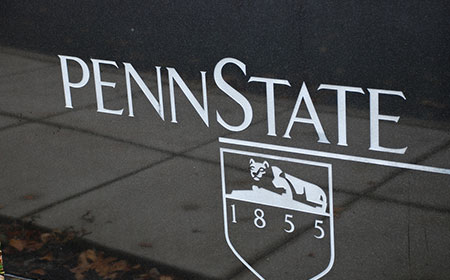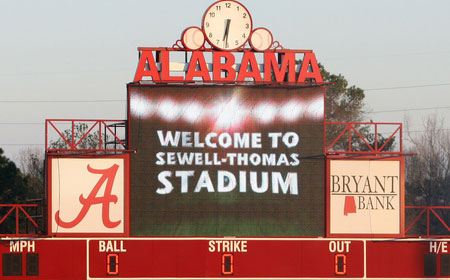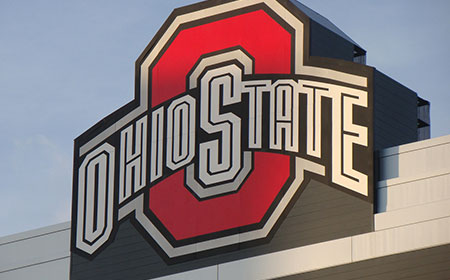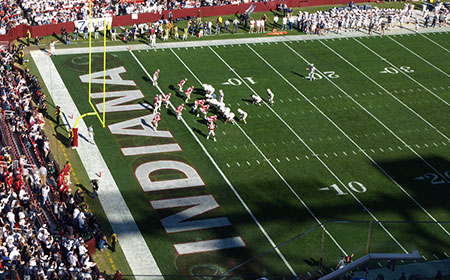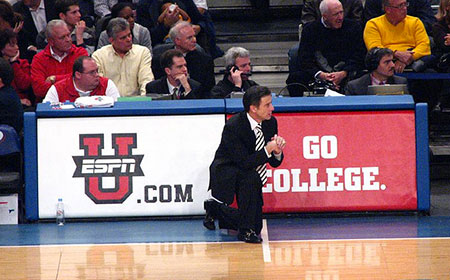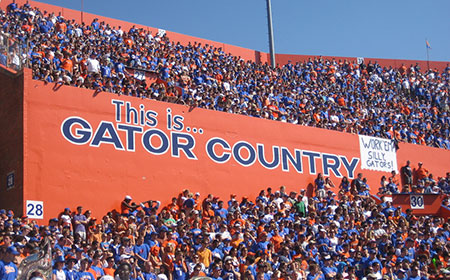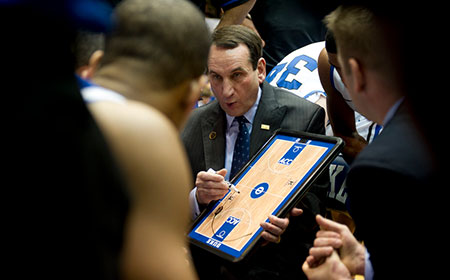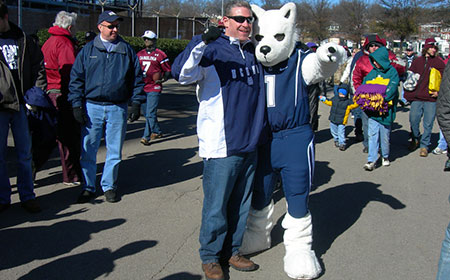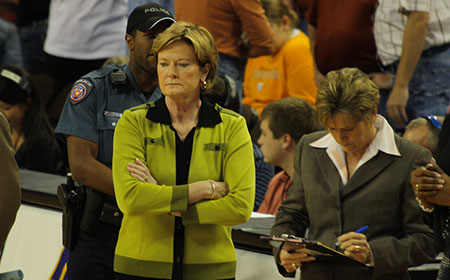| |||||||
Friday, July 20, 2012
Big Train Win in Herndon; TONIGHT is Homer Bobblehead Night; Cody Allen Gets the Call!
The Myth of In-Season "Maintenance" Training

The Myth of In-Season "Maintenance" Training
Ben Bruno
When I was in high school it used to annoy me so much when adults would start sentences with "Back when I was your age, things used to be so much different…" It just sounded so lame, and it made them seem old.
But alas, at the ripe old age of 26, I find myself saying it all the time to my athletes. I've become that guy.
They probably think I'm lame too, but it's true. Even ten years ago, things were so much different than they are today.
In high school, I didn't have a cell phone, the Ipod hadn't come out yet, and it used to be a big deal to swear. Now, all of that stuff is commonplace.
I can only imagine what it what it must've been like for Mike Boyle before the advent of fancy things like electricity and motor cars ;)
Seriously though, if you really take the time to stop and think about it, it's crazy how fast things have changed. At 26, I'm certainly not over the hill by any means, but it's a completely different world than it was just ten years prior.
Nowhere is that more true than the field of strength on conditioning.
I was an avid athlete growing up, but aside from some push-ups and sprints here and there at the end of practice, I never partook in any sort of organized physical training program all throughout high school. Nobody that I knew really did either, at least not on any meaningful level. I started messing around with some bodyweight training and light weightlifting when I was around 16, and I was first of my friends to do so. Keep in mind that I'm from New Hampshire, so trends take a little longer to catch on up there (kidding, sort of).
These days, it's become the norm for high school kids to participate in a strength and conditioning program, and it's really almost a requirement if you want to make it to the next level. MBSC is packed all year-round with high school kids looking to get a leg up on the competition.
It's great to see, and it's something I wish I had back in high school. It's a huge opportunity to make the most of your potential…if you take advantage of it.
I think that's why it grinds my gears a little bit when I hear about in-season "maintenance" training.
To me, training for maintenance is wasting a prime opportunity to get stronger and separate yourself from the pack.
The argument for in-season maintenance training is that you don't want to fry your athletes in the weight room and take away from their performance in their chosen sport.
I absolutely understand this rationale, and I agree that you don't want to fry them, but where I differ is that I absolutely believe you can get kids stronger in-season without frying them, and to take it a step further, doing so will in turn have a tremendously positive carryover to their ability to perform at a high level. The key is to keep the volume low and the intensity (and expectations) high.
For the past two years, I've worked with a high school varsity hockey team during their season, and about 75% of the boys come in to train with me year-round. This has been my first experience with coaching a team, but I'm lucky because being at MBSC, I have some great people to call on for assistance. I've made some mistakes along the way, but I've learned from them, and overall it's gone really well.
Both years the team has increased their strength over the course of the season. I say this based off simple testing we did prior to the start of the first practice and again at the end of the year. The tests included vertical jump, max reps on the bench press with 135 pounds (95 pounds for kids that couldn't bench 135), and max reps for bodyweight chin-ups. I do not like the idea of doing heavy one rep maxes with kids with a relatively low training age, so these tests allowed us to gauge their progress safely while still giving us some valuable objective data to see if the program worked.
It did, and it translated positively to the ice.
Well, I should amend that statement slightly because I think it's impossible to measure how much it truly translated, but I have to think it helped on some level because they've had two of their most successful seasons in quite some time, and in both seasons they've played their best hockey at the end of the season when other teams are fizzling out. More importantly, with the exception of a freak accident in the locker room with someone stepping on another boy's bare foot with a skate, they've incurred no serious injuries. In the brutal game of hockey, that's saying something.
The Program
The program we use is very simple. Games typically fall on Wednesday and Saturday, so we lift Thursday and Sunday to allow them time to recover. Workouts usually last 40-45 minutes: 10 minutes to warm-up, and 30-35 minutes to lift. We don't normally do any additional conditioning work since they are getting enough of that skating six days a week, but sometimes, depending on how they're playing and how they're feeling, we'll do some sled relays at the end of Sunday's lift-- partly for conditioning purposes, but more so for team-building.
The workouts are set up as follows:
Workout A (Thursday)
Dumbbell Snatch
Mobility Filler (Squat Stretch, Toe Touch Squat, etc.)
Trap Bar Deadlift
Chin-up
Core
1 Leg Squat
Pushup
Core/Mobility
Workout B (Sunday)
Jump Squat
Core
Bench Press
Rear Foot Elevated Split Squat
Mobility Filler
Inverted Row
Single Leg RDL
Core
Sometimes we have to change around the order of the exercises slightly to account for equipment logistics when the gym is crowded, but that's the basic setup.
For the bench press and trap bar deadlift, we work up to one top set per workout, waving the reps every three weeks or so from anywhere between 3-8.
On the rest of the exercises, we do 3-4 sets within a consistent rep range (depends on the exercise, as different exercises lend themselves better to different rep ranges) and shoot for modest weight increases from week to week.
Using this program, 22 of the 23 kids increased their bench press, 20 of 23 increased their vertical jump, and all 23 increased their chin-ups. For the younger kids with a lower starting point, that's probably to be expected, but we have kids that bench 265 lbs, jump 31.5 inches, and knock out 22 chin-ups so it's definitely not all "newbie" gains.
The "Secret"
The program itself is really nothing special on paper, but I think the real "secret" lies in the simplicity, the execution, and the expectations.
Since the overall workload is low, we can push the intensity, both literally and figuratively.
Literally speaking, we urge small incremental weight increases from week to week, provided the form stays good.
Figuratively speaking, we demand full effort and clearly set the expectation of getting stronger.
If you have it in your mind that you're trying to maintain, it can lead to complacency. That's not the mindset we want. We want people expecting to get stronger and fighting tooth and nail to make it happen.
Now that's certainly not to say that all of the boys add weight every single workout because as we all know, that's just not realistic. Some of the younger kids actually do for the most part, but that's just because their training age is so small and their starting point is so low. Our freshman and sophomores made tremendous strength increases over the course of the season. For the stronger kids that have been lifting longer, there are days where they just don't have it or aren't feeling good and we have to adapt and either lighten the loads, reduce the volume, or both. If you've lifted heavy weights yourself, then you know that at a certain point, progress slows down and even maintaining strength levels is a tall order. For these guys, it's especially important to have them in a mind frame for improvement because otherwise it will surely lead to not only maintenance but strength loss. Even training for strength, stronger athletes may end up maintaining, but they'll at least be better off than if they had just trained to maintain in the first place.
Clearly you can't put the pedal to the metal day in and day out, and part of the art of coaching is knowing when to back off. The art is something that I think comes with experience, so I'm working on that and is something I will undoubtedly get better at with time. There's no substitute for experience, and at some point, you just have to try things, be ok with making mistakes, and then learn from them. With that in mind, there have actually been a few times throughout the season after particularly physically demanding games and/or late nights where I've called an audible and used the normal lifting time for extra foam rolling and stretching.
For the most part though, we push them to get stronger, and the general trend is in that direction. It's not linear, but I'm ok with that as long as the end result is better than a starting point.
Mistakes
I mentioned before that I've made some mistakes along the way, so I'll share those now.
The first one was not monitoring the players' bodyweight enough.
Most high school boys have an atrocious diet, which when coupled with a crazy practice and game schedule, is recipe for losing serious amounts of weight in-season, particularly in metabolically demanding sports. Last season, we tested their weight and body fat at the start of the season, but we didn't do much beyond that. Not surprisingly, when I rechecked their bodyweight at the end of the season, most of them had lost more weight than I would have liked them to.
This season, we did weekly or bi-weekly weigh-ins on Sundays to keep track of them more closely and to serve as a constant reminder for them to be cognizant of their diet. This system worked really well and the kids have been much better about keeping their weight up, which has translated to better strength in the gym and on the ice.
The other mistake I've made was switching exercises too frequently and/or progressing exercises too much.
Last season I felt compelled to progress exercises every 3-4 weeks, even if what we were doing was working fine. I did it because I didn't want them to get bored, but the result was a lot of unnecessary soreness, and in some cases, pain. For example, I progressed them too quickly to ab wheel rollouts and it resulted in several of the boys complaining of excessive ab soreness and/or back pain.
It also didn't give them enough time to master some of the exercises. For example, after three weeks of offset single leg RDLs, they were just beginning to remember which hand to hold the dumbbell in, let alone master the balance aspect and start increasing strength.
This season, I tried to learn from my mistakes and followed the mantra "if it ain't broke, don't fix it." I told myself I wouldn't change out an exercise unless one of three things happened:
- They stopped making progress
- They started complaining about being bored
- They complained of pain
Much to my surprise, they never once complained of being bored. In fact, overall enthusiasm was sky high. It really makes you realize that a lot of time as coaches, we probably make changes from our own boredom, and garnering excitement is much more about creating a positive culture than it is about creating a sexy program.
Also much to my surprise, we didn't run into any major plateaus with any of the exercises. In fact, their progress was actually better because they had more of an opportunity to master the movements they were being asked to perform. Again, it makes you realize the power of a well-executed, simple program, especially for trainees with a relatively young training age.
The only major change I made to the program was to take out trap bar deadlifts and replace them with single leg "skater squats" with about a month left in the regular season because a lot of the guys were complaining of feeling beat up.
Aside from that, the program stayed largely intact except for small modifications for certain individuals working around minor injuries.
Conclusion
I guess it goes back to what Dan John says about "simple, but not easy." In-season training obviously needs to be shorter and more focused, but I don't think it has to be (or should be) maintenance work. I don't think it's just of semantics either. It's a philosophy, and it's a mind frame. Remember, it's called strength training for a reason.

Thursday, July 19, 2012
New video reveals The Lazarus Cure
The Lazarus Cure
How a Nobel Prize winning
discovery can help you live longer and beat almost any disease. It’s nothing short of amazing. Thanks to a Nobel Prize winning discovery, you can now live longer, be healthier, and beat almost any disease. I call this discovery “the Lazarus Cure” because it can take aging cells and bring them back from the brink of death.
I’ll tell you all about the Lazarus Cure in just a moment, but first I need to explain why your body ages in the first place.
There are many symptoms of old age, but new research shows there is one main cause behind almost all of them. It’s called a telomere, and it determines the lifespan of every cell in your body.
Here’s how it works.
As you may know, every cell in your body contains DNA. And each time a cell divides, it makes a copy of that DNA. The problem is that the process isn’t perfect. Every time a cell divides, it loses a little bit of the DNA at the end of the chromosome.
The DNA at the end of the chromosome is called the telomere. A telomere is basically “junk” DNA that keeps the chromosome from unraveling. It’s sort of like the little plastic cap at the end of your shoelace.
As you know, when the cap on your shoelace wears out, your shoelace unravels and stops functioning. Well, your chromosomes work the same way. Every time a cell divides and the DNA copies, a little bit of the telomere “cap’’ is lost.
Eventually, the telomere becomes too short to hold the DNA together. At this point, the cell can no longer divide and it dies. These dying cells are what cause almost all “old age” diseases.
Research shows the shorter your telomeres are, the more likely you are to suffer from cancer, atherosclerosis, Alzheimer’s disease, osteoarthritis, osteoporosis, macular degeneration, and even skin aging. Dozens of studies link shortened telomeres to deadly diseases. For example…
Until now scientists believed that there was no way to prevent your telomeres from shortening. They thought the aging process was irreversible.
Then two scientists discovered an “immortality enzyme” that can lengthen your telomeres.
And according to a review article, “In humans, this would be like restoring the health and vigor of a sickly 80-year-old to that of a young adult!”
So how can you lengthen your telomeres so you can live longer and beat nearly all the diseases of old age?
Find out by watching a special video presentation. This presentation will give you all the details about this amazing breakthrough.
If you delay in watching this, you might forget or the video might be taken down and you'll have missed out. But spend a few minutes watching this now and you'll be prepared to experience your own healing discovery!
|
Big Train Make Aces Walk Off; Baseball History Night Recap; BT now #22!
| |||||
Wednesday, July 18, 2012
10 COLLEGES WITH THE MOST POWERFUL COACHES
July 17, 2012
Ideally, colleges should be well-known, desirable, and popular because of the high quality of educational resources they offer students and other members of the community. Yet, here in the U.S. that’s not always the case. Many schools’ academic programs are eclipsed by the overwhelming popularity of their sports teams, and for better or worse that has made the coaches and head administrators of these teams incredibly powerful figures that dominate what has now become a billion-dollar industry for colleges and universities.
Often, these college coaches command multi-million dollar salaries that outpace those of any other figures at the school (and the budgets of some entire departments) and may even hold quite a bit of influence over the college president and the direction of the school itself. While some coaches have done a lot to help schools, their athletes, and their image through their influence, others have abused their power and made some pretty poor and sometimes downright appalling decisions. The coaches that follow have been some of the most powerful in recent sports history and are well known for their winning streaks, high profiles, and in some cases, distressingly unprofessional misdeeds.
Penn State, Joe Paterno:
Paterno was head coach of the Nittany Lions for almost 46 years and holds the record for the most victories by an NCAA Division I coach. He coached five undefeated teams, won major and memorable games, and was inducted into the College Football Hall of Fame in 2007. In short, he was one of the winningest and most powerful figures in college football, yet that power had a dark side, as was revealed in 2011. Paterno was fired from Penn State when it was revealed that he not only had knowledge that assistant coach Jerry Sandusky was abusing young men but actively dissuaded other university officials from reporting him to the authorities. Celebrity, high salary, success, a long tenure, and the support of team boosters and college donors gave Paterno power at the university that he shouldn’t have had, influencing the decisions of the board and the president, making him almost impossible to fire, and ultimately causing harm to dozens of young men that could have easily been prevented. Paterno is perhaps one of the clearest and most saddening examples of a college coach who had too much power for far too long.University of Alabama, Nick Saban:
Those who are outraged by how much university administrators make only need to look at astronomically high coaching salaries to put things into perspective. Nick Saban currently holds the record for the highest salary ever paid to a college coach: $32 million over eight years, with use of a university airplane, two cars, and a country club membership to boot. It’s a testament to his power and status at the university that he was able to command this amount, and in 2008 Forbes called him the “Most Powerful Coach in Sports.” More than his salary, however, gained him this distinction. Saban was given complete control over the football program, including recruiting, coaching, business administration, and even marketing. So far, the investment seems to be paying dividends to the university, with a profit of $32 million in his first year of coaching alone and bringing in even more through donations from alumni and school supporters.Ohio State, Jim Tressel:
Think college coaches aren’t really all that powerful? Jim Tressel admitted in 2010 that he had knowledge of his players taking money and tattoos from a drug dealer, concealed this information and did not report it to authorities, let these players start in games, and after all that was defended by the university president for these actions. In fact, Ohio State president Gordon Gee stated that, “I’m just hopeful the coach doesn’t dismiss me.” Gee may have been joking, but there is some distressing truth in his statement about the skewed balance of power in college sports today. Despite his improper actions, Tressel still had the support of the school and the community, with fans showing up at a pep rally to support him. While he was ultimately allowed to resign (a controversial decision in itself), his reputation doesn’t seem to be as tarnished as it should have for his actions, and he now works at the University of Akron as a vice president.Indiana State, Bobby Knight:
Bobby Knight has worked for a number of college teams in his coaching career, each time helping the teams to turn around and become winners, most famously at Indiana where he led the Hoosiers to numerous championships, won several Coach of the Year honors, and was even asked to coach the U.S. Olympic team. Yet Knight is as famous for his fits of temper as his high win count. During his tenure at Indiana he spewed profanities during an NCAA tournament news conference; kicked his son, an IU assistant, and responded with a four-letter obscenity to Indiana fans behind him who booed; refused to let his team finish an exhibition game against a Soviet team; and even purportedly choked one of his players. During all of this bad behavior, Knight was never under any threat of being fired by university president John Ryan who said he couldn’t fire Knight because of the alumni. In fact, it wasn’t until Ryan was replaced as president that Knight was ousted, with Myles Brand making a name for himself at the university for those actions. However necessary, Brand would face outrage, protests, and even threats for his actions, which in retrospect were long overdue and well within his power.Florida State, Bobby Bowden:
Bobby Bowden is one of the most decorated coaches in college sports history, winning an impressive 389 games (though some of those wins were vacated after it was revealed that ineligible players were on the field). Bowden may have an impressive record, but he’s another coach who held perhaps a little too much sway at his college. In 2008 the head of the Board of Trustees asked Bowden to step down in light of recent losses and Bowden’s advanced age (at the time, he was turning 80). Bowden responded that he would let them know if he wanted to come back or not, publicly demonstrating for all to see who was really in control of the situation. Even the governor of Florida announced that he supported Bowden if he chose to return to coach and that he considered him one of the greatest coaches of all time, wishing him luck for the season. Bowden would eventually retire on his own terms, but his power over the university and the community makes him stand out as one of the most influential coaches to ever work in college sports.University of Louisville, Rick Pitino:
The only coach to ever lead three separate teams to the Final Four, Rick Pitino was a college sports heavy hitter, a fact that was also evidenced by his incredible $7,531,378 a year salary. Yet his position at the school, perhaps cemented by this winning history, was so solid that even a major scandal couldn’t shake it. Despite his contract stating that Pitino could be fired for “acts of moral depravity or misconduct that damage the university’s reputation,” he held onto his job after it was discovered that he had sexual relations with a woman in a Louisville restaurant then paid her to have an abortion and keep quiet about the tryst. Those actions may have done damage to the university’s reputation, but university president James Ramsey decided that the damage would be worse if the school lost Pitino, allowing him to stay on as coach. After this year’s winning season and healthy prospects for next year, Ramsey probably feels pretty justified in that decision, though he’s made it quite clear where the university’s priorities lie.University of Florida, Urban Meyer:
Urban Meyer is in the top echelon of college coaches when it comes to salary, pulling in a contract with the University of Florida that promised him a whopping $24 million over six years. He has since moved on to Ohio State, where he commands $4 million a year, bonuses, and the use of a private jet. Unlike many others on this list, Meyer has generally held himself above many of the problems that have affected other powerful college teams, a big part of what helps him command such a high salary. Yet when he resigned from Florida in 2009, some pointed to serious problems with the team, including drug use, preferential treatment, entitlement, and scholarship manipulation. Meyer has denied these allegations, but with misbehavior and rule violations so prevalent in college sports and kept so deeply under wraps by embarrassed schools, it may never be known what truly happened.Duke University, Mike Krzyzewski:
Sometimes just called Coach K, this Duke coach has led his team to four NCAA championships, 11 Final Fours, 12 ACC titles, and 13 ACC championships. He’s also the coach of the men’s national basketball team, winning gold at the 2008 summer Olympics and hoping to lead this year’s team to a repeat victory. For his expertise, he’s paid pretty well, pulling in a whopping $4,195,519 during the 2010-2011 season. What’s more, he seems to have thus far avoided many of the scandals that have plagued other high-profile coaches, instead being better known for helping ensure almost all of his players graduate. He did raise eyebrows with recent comments in defense of Paterno, stating that the iconic coach’s record of winning shouldn’t be wiped clean because of recent revelations of misconduct. Many have found this distressing, as it reflects and increasingly common attitude that gives winning games more importance than doing the right thing.University of Connecticut, Geno Auriemma:
So far, all the coaches on this list have been for men’s sports, but there are some women’s sports coaches who stand out for their power on college campuses as well. Geno Auriemma is one of those coaches. He has led the Huskies to seven NCAA Division I championships, won six Naismith College Coach of the Year awards, and is the head coach of the U.S. women’s national team in this year’s Olympic games. He has long enjoyed a rivalry with Pat Summitt of the University of Tennessee, with each vying to coach the best women’s basketball teams. While Auriemma has largely enjoyed a spotless record at UConn, a recent lawsuit may tarnish that, as an NBA official for the Olympics claims Auriemma harassed her and then had her fired. The allegations may be proven to be false, but for now many are hoping that the legal trouble doesn’t distract Auriemma from coaching the women’s team to victory.University of Tennessee, Pat Summitt:
As unfair as it may be, women’s sports often don’t get as much attention on college campuses, nor do their coaches. Yet Pat Summitt made a name for herself during her tenure at the University of Tennessee coaching the Lady Volunteers basketball team. She is the all-time winningest coach in NCAA history in either men’s or women’s basketball, for all divisions. During her time at Tennessee, Summitt led her team to eight national championships, earning 1,098 victories during her 38 years as coach, and never once having a losing season. In both 1997 and 2000, Tennessee asked Summitt to coach the men’s team, an unprecedented move, but Summitt declined the offer, opting to stick with the women’s team. She was so well-regarded as a coach that she was awarded the Presidential Medal of Freedom in 2012 by Barack Obama. That’s a kind of power and prominence that no other coach on this list can match.
Meet ESPN's Tim Kurkjian Tonight; Big Train Ranked #22; Chad Cordero Interview!
| |||||||||
Avoid colon cancer with an EASY exam
Less Invasive Tests May
Replace Colonoscopy
Mention the word "colonoscopy" to someone and they'll probably get a funny look on their face. Although you're unconscious during the test, it's not a pleasant thing to think about or go through.
The most unpleasant part is the harsh laxatives you have to take to clear everything out before the test. Is there a better way? There may be now... keep reading...
Continued below...
The most unpleasant part is the harsh laxatives you have to take to clear everything out before the test. Is there a better way? There may be now... keep reading...
Continued below...
"Shocking Confessions of a Drug Company Insider"
In this exposé, a top executive of a major pharmaceutical company spills the naked truth about the drugs you and your family take... which drugs heal, and which ones KILL... what doctors turn to when they don't know the cure... what they do when they themselves or their loved ones are stricken with disease or illness... what life-saving resource they insist should be in every home. Watch this must-see video nowbecause your life -- or the life of your loved ones -- may depend on it.
|
Despite the drawbacks, a colonoscopy is worth the bother because it gives you an excellent chance of avoiding colon cancer -- one of the most common cancers. As opposed to, say, skin cancers, which are seldom fatal, or other cancers that are extremely rare, colon cancer is one you SHOULD worry about.
And you're in luck, because colonoscopy is one screening test that IS successful at finding cancer and precancerous growths while they're still easily treatable.
But if you'd like to avoid some of the bother and discomfort, a large federal study suggests that a simpler, less invasive lower bowel exam may reduce your risk of colon cancer almost as much as a full-scale colonoscopy.
The study, published online by the New England Journal of Medicine, suggests asigmoidoscopy could be a cheaper, easier way to diagnose colon cancer risk.
The exam can be used to determine whether the lining of your lower sigmoid colon, rectum and anus are normal in color, size and texture. During the exam the doctor can also perform a biopsy on a suspicious growth if one is found.
During the exam, the doctor inserts a flexible tube into your anus and guides it through the rectum deeper into your lower colon, but not through the entire colon as in a colonoscopy. A small camera mounted on the scope sends videos that help the doctor examine the intestinal lining.
And you're in luck, because colonoscopy is one screening test that IS successful at finding cancer and precancerous growths while they're still easily treatable.
But if you'd like to avoid some of the bother and discomfort, a large federal study suggests that a simpler, less invasive lower bowel exam may reduce your risk of colon cancer almost as much as a full-scale colonoscopy.
The study, published online by the New England Journal of Medicine, suggests asigmoidoscopy could be a cheaper, easier way to diagnose colon cancer risk.
The exam can be used to determine whether the lining of your lower sigmoid colon, rectum and anus are normal in color, size and texture. During the exam the doctor can also perform a biopsy on a suspicious growth if one is found.
During the exam, the doctor inserts a flexible tube into your anus and guides it through the rectum deeper into your lower colon, but not through the entire colon as in a colonoscopy. A small camera mounted on the scope sends videos that help the doctor examine the intestinal lining.
And this is BETTER than a colonoscopy because…
According to the National Institutes of Health (NIH), a sigmoidoscopy has quite a few advantages because it:
- Costs far less than the colonoscopy
- Doesn't require sedation
- Examines only the sigmoid, or descending colon, and is less invasive
- Requires less bowel cleansing, i.e. harsh, nasty laxatives
Although it inspects only the lower part of the colon, this is where most colon cancers occur. And randomized clinical trials suggest that this procedure is effective in helping to reduce colon cancer incidence and deaths.
Current guidelines recommend that people at average risk should have a colonoscopy every 10 years. The sigmoidoscopy is recommended every five years—which increases the opportunity to catch abnormal growths sooner.
As with a colonoscopy, you still might need a laxative or an enema the night before, but it's not necessary to evacuate the whole colon. And this is true for another screening option doctors use to check colon health…
Current guidelines recommend that people at average risk should have a colonoscopy every 10 years. The sigmoidoscopy is recommended every five years—which increases the opportunity to catch abnormal growths sooner.
As with a colonoscopy, you still might need a laxative or an enema the night before, but it's not necessary to evacuate the whole colon. And this is true for another screening option doctors use to check colon health…
Talk about 'virtual reality!'
The American Cancer Society (ACS) has wholeheartedly endorsed the use of virtual colonoscopy as a screening tool for colon cancer.
This procedure uses computerized tomography (CT) scans to detect abnormalities or changes in your colon and rectum. The scan involves a massive dose of cancer-causing X-radiation, and for this reason I don't recommend it. My first choice would be colonoscopy or sigmoidoscopy.
But so you're informed about your full range of choices, I'll describe what a virtual colonoscopy involves.
The exam only takes about 20 minutes and typically is performed in a hospital radiology department.
During the test, the patient lies on her left side on a table connected to a CT scanner or magnetic resonance imaging (MRI) machine.
With the patient's knees up toward the chest, medical professionals insert a small tube in the rectum and gently pump air into the tube. This helps expand the colon so it's easier to see.
Finally, with the patient lying on her back, the table slides into the CT or MRI machine to take hundreds of x-ray images of the colon. A computer combines the images to form 3-D pictures of the colon for viewing on a video monitor.
The exam is short and less invasive than a traditional colonoscopy. But remember that the virtual colon exam won't allow a doctor to remove tissue samples or polyps.
And despite its sweeping endorsements by the medical establishment, many hospitals have been slow to adopt the procedure. They cite a lack of sufficient evidence to support approval for Medicare reimbursement.
With costs averaging between $400 to $800, the virtual scan is significantly less expensive than the average $1800 for a traditional colonoscopy.
But if doctors note a suspicious polyp, they must perform a colonoscopy anyway, in order to excise tissue for a biopsy. This is one reason Medicare won't reimburse for the virtual scan.
There's yet another option for checking your colon that won't require the pesky laxative purge.
This procedure uses computerized tomography (CT) scans to detect abnormalities or changes in your colon and rectum. The scan involves a massive dose of cancer-causing X-radiation, and for this reason I don't recommend it. My first choice would be colonoscopy or sigmoidoscopy.
But so you're informed about your full range of choices, I'll describe what a virtual colonoscopy involves.
The exam only takes about 20 minutes and typically is performed in a hospital radiology department.
During the test, the patient lies on her left side on a table connected to a CT scanner or magnetic resonance imaging (MRI) machine.
With the patient's knees up toward the chest, medical professionals insert a small tube in the rectum and gently pump air into the tube. This helps expand the colon so it's easier to see.
Finally, with the patient lying on her back, the table slides into the CT or MRI machine to take hundreds of x-ray images of the colon. A computer combines the images to form 3-D pictures of the colon for viewing on a video monitor.
The exam is short and less invasive than a traditional colonoscopy. But remember that the virtual colon exam won't allow a doctor to remove tissue samples or polyps.
And despite its sweeping endorsements by the medical establishment, many hospitals have been slow to adopt the procedure. They cite a lack of sufficient evidence to support approval for Medicare reimbursement.
With costs averaging between $400 to $800, the virtual scan is significantly less expensive than the average $1800 for a traditional colonoscopy.
But if doctors note a suspicious polyp, they must perform a colonoscopy anyway, in order to excise tissue for a biopsy. This is one reason Medicare won't reimburse for the virtual scan.
There's yet another option for checking your colon that won't require the pesky laxative purge.
Introducing... the world's first colon cleanser 'app!'
Researchers at Massachusetts General Hospital (MGH) recently developed computer software that can digitally "cleanse" waste matter from a virtual colonoscopy.
According to study results published in the Annals of Internal Medicine, this procedure produces a pretty accurate picture of the colon wall and any potentially cancerous growths.
NO laxatives and NO probes are required, and this may make it more attractive to people who refuse to go through the more invasive tests.
Lead study author Dr. Michael Zalis, director of CT colonography at MGH, told Timemagazine that "the level of performance was very comparable to CT [virtual] colonography as well as optical [scope-based] colonoscopy."
For this procedure, reseachers asked 605 men and women between ages 50 and 85 to eat a low-fiber diet for two days before the virtual colonoscopy. They also drank small amounts of contrast agent dissolved in their food or drink three times a day.
The contrast agent selectively marked only digested food or drink and feces in the stomach or colon. This allowed all other tissues, including possible polyps, to remain untouched.
Patients underwent a 15 to 20 minute CT scan, without sedation, and were able to go back to their normal activities right after the test.
The investigators then used their software program to digitally remove all elements tagged by the contrast agent. This allowed radiologists to examine a whistle-clean picture of the colon.
Dr. Zalis said this procedure detected a whopping 91% of patients who had one or more of the high-risk lesions that were 10 mm or larger.
This screening tool still won't allow doctors to remove and test suspicious tissue. But it may help ensure that a great many people don't get unnecessary treatment for non-cancerous growths.
In any case, these newer, less-invasive tests may encourage more people to schedule colon screenings. And this just might be a step toward cutting colon cancer and death rates down to size.
According to study results published in the Annals of Internal Medicine, this procedure produces a pretty accurate picture of the colon wall and any potentially cancerous growths.
NO laxatives and NO probes are required, and this may make it more attractive to people who refuse to go through the more invasive tests.
Lead study author Dr. Michael Zalis, director of CT colonography at MGH, told Timemagazine that "the level of performance was very comparable to CT [virtual] colonography as well as optical [scope-based] colonoscopy."
For this procedure, reseachers asked 605 men and women between ages 50 and 85 to eat a low-fiber diet for two days before the virtual colonoscopy. They also drank small amounts of contrast agent dissolved in their food or drink three times a day.
The contrast agent selectively marked only digested food or drink and feces in the stomach or colon. This allowed all other tissues, including possible polyps, to remain untouched.
Patients underwent a 15 to 20 minute CT scan, without sedation, and were able to go back to their normal activities right after the test.
The investigators then used their software program to digitally remove all elements tagged by the contrast agent. This allowed radiologists to examine a whistle-clean picture of the colon.
Dr. Zalis said this procedure detected a whopping 91% of patients who had one or more of the high-risk lesions that were 10 mm or larger.
This screening tool still won't allow doctors to remove and test suspicious tissue. But it may help ensure that a great many people don't get unnecessary treatment for non-cancerous growths.
In any case, these newer, less-invasive tests may encourage more people to schedule colon screenings. And this just might be a step toward cutting colon cancer and death rates down to size.
Tuesday, July 17, 2012
Special Event with ESPN's Tim Kurkjian; Big Train Players in Pro Ball; DC Sports Night a Success
Wednesday Night Features ESPN's Tim
Kurkjian and Special Baseball Picnic Meal! |

ESPN's Tim Kurkjian will be at Povich on Wednesday for Baseball History Night.
when the now #22 ranked Bethesda Big Train face the Alexandria Aces! On this special night, you can get to the ballpark at 6:00, before the game at 7:30, and buy a special ticket that includes...
|
| Big Train Players in Pro Ball |

Matt Bowman played for Big Train, now plays for the Brooklyn Cyclones.
Here is a mid-season update on how Big Train alumni are currently doing in pro ball. Thanks to Volunteer Coordinator Emeritus Bill Hickman for putting this together. To get you started, here are some updates on Big Train players of the very recent past. To see the entire report, click here.
Martin Agosta, RHP (BT 2011) Signed with the San Francisco Giants on 7/11/2012 for a $612,000 bonus (He was their #2 draft pick). He will be in their Scottsdale training camp for the rest of the summer.
Michael Aldrete, RHP (BT 2011) Johnson City Cardinals (Appalachian Lg. - Rookie) 1-0, 4.91 ERA in 6 games.
Cody Allen, RHP (BT 2008 & 2010) Columbus Clippers (International Lg. - AAA) 2-2, 2 saves, 2.43 ERA in 23 games, after starting season with the Carolina Mudcats (Carolina Lg. - Hi A) 0-0, 0.00 ERA in 2 games and Akron Aeros (Eastern Lg. - AA) 0-0, 1 save, 1.17 ERA in 5 games.
Matt Bowman, RHP (BT 2010-11-12) Brooklyn Cyclones (NY-Penn Lg. - ss-A) 1-1, 2 saves, 3.24 ERA in 4 games.
To see the entire report, click here.
|
DC Sports Night a Success Despite Big Train Loss
| ||
Gary Clark and Darnerien McCants were in the house last night to help the Big Train celebrate DC Sports Night, as fans with hometown jerseys received free admission. Clark in particular was impressed with Povich Field, describing it as "unbelievable." Both former Redskins receivers, Clark and McCants spent time giving fans a chance to get some autographs and pictures with their favorite hometown athletes.
The Big Train were unable to come up with the win last night, falling 6-3 to the Alexandria Aces. Jon Carlson (High Point) took the mound for the Big Train last night, giving the team four solid innings. Carlson allowed no earned runs while giving up just three hits and recording four strikeouts.
The Big Train scored two early runs in the second and third innings. The first run coming in on an Avondre Bollar (San Diego State) double and the second on a solo home run by Brennan Middleton (Tulane).
Alexandria scored four runs and took a 4-2 lead into the bottom of the fourth. Cameron Cuneo (UC Santa Barbara) would come in to pitch the fifth inning. Cuneo would go three strong, giving up just two hits and no runs while striking out two. Cuneo's solid three innings of work would give the Big Train a late chance to rally.
However, the Big Train rally would come up short. Though they were able to score one run to cut the lead to one, the Aces scored a couple in the ninth to seal the game.
Be sure to come see if the now #22 ranked Big Train can get their revenge against the Aces on Wednesday night as they host the Aces again at Povich Field.
|
Subscribe to:
Comments (Atom)






